A hiking backpack is best while trekking through landscapes.
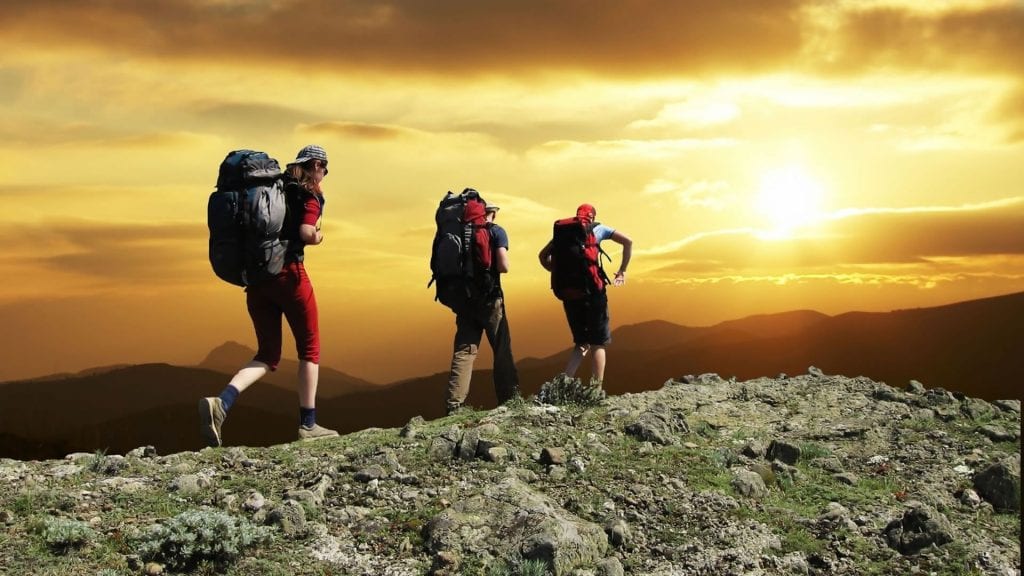
From forests to mountains to deserts, taking in the beauty that nature has to offer can be a life-changing experience. People from all across the world go on everything from day hikes to long backpacking trips that are full of hikes.
For some people, once they go on a few great hikes, they can’t imagine spending their free time another way. For others, they just wish they had more time to spend in the great outdoors and look forward to weekend outings. But, no matter which you are, you’ll need some way to carry your supplies, like extra hiker’s gear, a sleeping bag, a water bottle, a first aid kit, food, and more. That’s where manufacturers like Osprey, Ozark, TETON Sports, FENGDONG, and more come in.
Whether you’re a regular hiker or just getting into the practice, having the right gear can make an experience go from decent to amazing. One of the most basic pieces of gear is a backpack. That’s what will allow you to carry all of your camping gear with you. And, of course, you want to have the top hiker’s available backpacks.
When choosing the top hiker’s backpacks for your needs:
- You’ll need to set a budget because most backpacks can get well into the hundreds in price when you consider features like size and materials. Some good-quality backpacks are under $100.
- You’ll also need to consider what you’ll be using your bag for.
- If you’re going to be taking a good hiking knapsack out a lot, you want to make sure you get a high-quality pack that will last you.
Will you be walking for just a few hours? A few days? If you’ll be hiking for longer than a few days, it might be a good idea to spring for a little bit more expensive bag like the TETON Sports Explorer 4000, but in any case, there are still great cheap backpacks out there for any kind of experience.
Best Hiking Bags: Important Factors To Consider
Best Volume
The first factor we’d suggest considering is the size of the durable backpack you want. Usually, lighter packs are measured in volume and can range from 15 liters to 80 liters or more. Generally, 15-25 liters is plenty for a day hike, while anywhere from 40 liters to 80 liters or more is adequate for overnight hikes, depending on what kind of gear you’ll need. The largest one on our list below is the TETON Sports Explorer 4000 at 65L capacity.
Items like sleeping bags and pads, tents, cooking supplies, food, and water can begin to take up a lot of room, so if you need to carry a lot, you’ll need to look for a big bag. But, don’t forget, a solid backpack tends to be heavier, so keep in mind how much your body can handle.
You’ll also want to check how the bag is formatted in terms of space. There will be multiple compartments so check the space of each of them. Look at how big the main compartment is. Also, look at the size of the side mesh pockets where you’ll be keeping things you want handy. If you like to do overnight hikes, you need to check out the sleeping bag compartment, as well. Some packs come with attached daypacks or “brains” (smaller, often detachable pouches on the top of the bag). It’s a good idea to double-check if the volume measurement includes those additional spaces or not (it usually does).
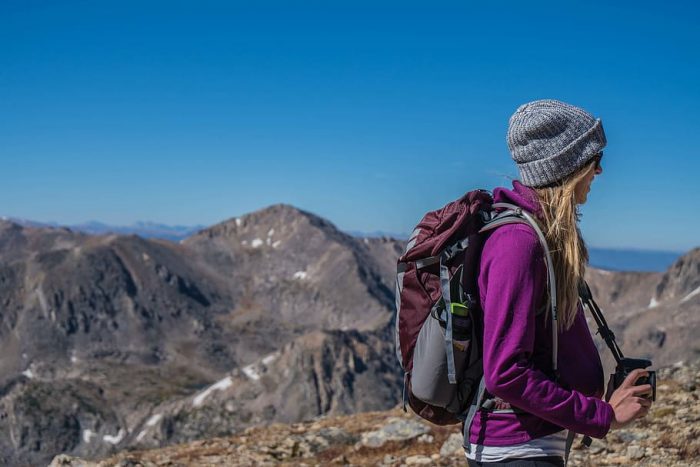
Best Durability
The top hiker’s backpacks under 100 are durable. There’s no way around that. When you hike, you’re often exposed to the elements. There’s a lot of rugged terrain. Most hiking backpacks need to be able to stand up to the exposures they’re going to have on all of your trips. If you’re a serious backpacker and hiker, you may not want to settle on even the top-notch budget hiking backpacks because the durability just won’t be there for what you need. But, even occasional hikers need a durable hiking backpack that can protect their gear from outdoor exposure.
That might range from simple brushes with nature, like a stick scraping the side of your bag when you hike through a wooded area and dirt when you set your bag down, to more intense encounters, like rain or hailstorms. A good durable material will be abrasion resistant so you don’t have to deal with tears in your hiking bag.
In any case, your bag needs to be made of strong enough materials that are abrasion-resistant to hold up through those kinds of conditions, since a broken bag that you can’t carry or that might cause you to lose supplies can be devastating to your safety.
Waterproof/Resistance
As a subset of durability, water resistance is very important to a bag because you never know when you might get caught in the rain, especially if you move through different altitudes and terrains.
While the right ones are fully waterproof, a cheap backpack may not be. You can always consider a rain cover for your bag or a bag liner (which can be as simple as a huge trash bag) for an extra layer of protection from moisture if needed. Even if your hiking backpack is water resistant, it is still a good idea to keep a rain cover with you, too. The rain cover will keep your bag extra protected from rain and other precipitation.
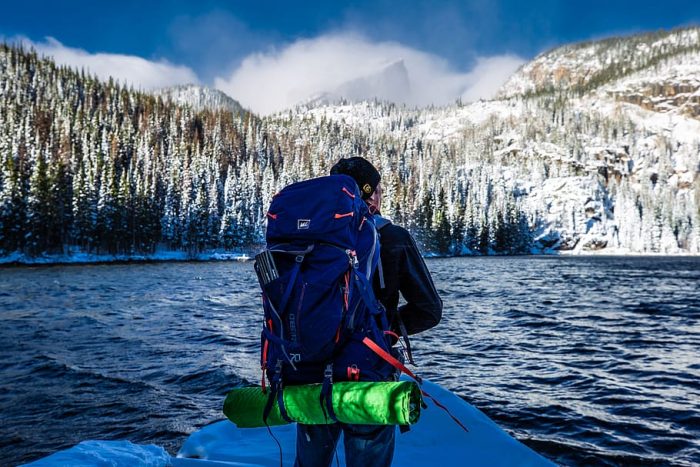
Best Pockets
The placement and availability of different pockets might not seem so important but having easy accessibility to essential equipment in a pinch can make a big difference in comfort and safety.
The best hiking backpack will give you easy access to not only your water source (whether that’s a bottle in a side pocket or a bladder with a straw close to your face) but also a place to store equipment in case of an emergency that you can easily get to. Many hiking backpacks have a hydration bladder included, or at the very least a pocket for inserting a hydration bladder. If the one you’re considering doesn’t, then make sure there is an easy-to-reach water bottle sleeve alongside the side pockets so you can get to your water quickly.
The sleeping bag compartment is another pocket that is super important if you’re going to be doing overnight hiking trips. If you’re hiking where it gets really cold at night, you’re going to need a good, thick sleeping bag with you to stay warm at night. That means the sleeping bag compartment needs to be able to accommodate it. You also definitely want the sleeping bag compartment to be water-resistant.
It might sound silly, but you want to make sure some pockets are sealable with zippers. Side pockets won’t always be sealable. Somewhere on your hiking backpack, you need to have some zippered pockets, such as side pockets or front pockets. That gives you somewhere to store your personal items where they won’t fall out.
The main compartment of the hiking backpack below $100 isn’t technically a pocket, but you use it in the same way. Look at how the main compartment is laid out. Does it have a separation between areas so you can organize your hiking gear? Are there any zippered pockets within the main compartment? What security features are there for the main compartment of the hiking backpack? There’s a lot to consider when you’re looking at the pockets of a hiking backpack.
Best Strap Design
A good strap design can make a big difference in how your body feels after a long day of hiking. The shifting weight from your shoulders to distribute it around your body, most notably through strong hip straps.
- You should look for a bag with a well-padded, thick shoulder strap with chest support.
- If you’re considering a larger bag, you should also look for one with comfortable and adjustable hip straps. Even if you’re only going hiking for the day, having well-padded shoulder straps should be on your list of wants for your hiking bags. Some backpacks under $100 have this feature.
- For those who are going to be doing some serious hiking with their pack, you should look for a bag with compression hip and chest straps. Compression straps are along the side of hiking backpacks in a crisscross pattern and they compress the contents of the pack close to your body so that the weight distribution is better for your comfort. Compression straps are pretty common on many hiking backpacks, but you won’t find them on all of them.
- If you’re up for a hiker’s bag under $100, make sure that the shoulder straps are easily adjustable and that the padded hip belt is made of adjustable straps.
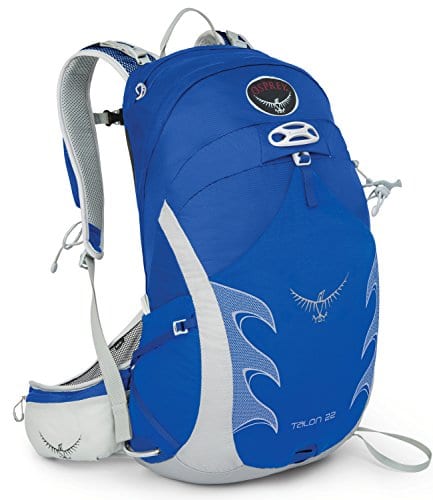
Best Internal Frame
One of the biggest features that sets a hiking backpack apart from a regular one is the frame. You can have hiking backpacks under 100 with a sturdy internal frame or an external frame.
- An internal frame is what gives hiking backpacks their shape and allows them to keep that shape even when there’s nothing in it. It’s the bone structure of the pack. When you search for hiking backpacks under $100 online, it’s most likely that the results you get will include many options for an internal frame hiking backpack.
- An internal frame backpack is meant for carrying 15 lbs. or more of hiking gear. The difference between internal frame backpacks and an external frame is the internal frame keeps the bag narrower and more cinched in toward the body. That makes an internal frame backpack better for hiking and could also include things like climbing, skiing, or trekking through thick foliage. One to check out for this is the TETON Sports Explorer 4000.
- The internal frame redistributes the weight of your hiking gear to your hip area. That’s the part of your body that can handle the most weight-bearing. So, along with the internal frame, you also want to make sure it has padded shoulder straps, compression straps, and a good hip belt.
The Best Hiking Bags Under $100
Now, let’s take a look at the good ones we could find that do well at all of the features we’ve mentioned above and fit into your potential price range.
Top Day Bag: The Osprey Talon 22 combines comfort and practicality. It’s one of the only daypacks that offer hip straps, making it one of the most supportive daypacks out there. This backpack under 100 also has padded shoulder straps that are adjustable, two zippered side pockets, and is compatible with an external hydration sleeve. Be aware, this one is not water resistant so you’re going to need to pack a rain cover with you.
Top Day Bag with Water Bladder: If we had to sum up the Osprey Daylite Daypack in three words, they would be: Simple, comfortable, and durable. Plus, you can thread a water bladder through it, so it really doesn’t get much better than this. Inside, there is a sleeve that can be used for a water bladder or a tablet. There are hip belt pockets to give you better support, adjustable shoulder straps, and even compression straps to cinch everything in tight. Osprey added breathable mesh and breathable molded foam to the back panel to help with the ventilation to keep you cool.
Top Budget Bag: At just $35, the Ozark Trail 40L Hiking Backpack Eagle is one of the top-notch cheap backpack deals out there with a relatively large capacity and comfortable straps. This bag below 100 has room for days’ worth of hiking gear, comes with a sewn-in rain fly that is stored in the bottom of the pack, is compatible with a water bladder, and has plenty of zippered pockets and side pockets for easy access to essential items.
Top 40L Bag: The FENGDONG 40L Waterproof Hiking Backpack is well-designed to accommodate many different kinds of equipment from trekking poles to a bed roll, and has great side pouches, making it a great 40L choice. This is a water-resistant backpack with a main compartment that has slots and pockets for organizing all of your hiking gear. The hip belt helps redistribute the weight of the pack and gives you more support and also has convenient side pockets with zippers for keeping items safe.
Top 50L Bag: We love that the Esup 50L Hiking Backpack comes with a rain cover and convenient pouches on the hip straps, making it an extremely practical budget choice for this size hiking backpack. The polyester and nylon materials the pack is made of are water resistant, but it also comes with a rain cover for added protection. The pack is abrasion-resistant, as well. Between the shoulder straps, the hip belt, and the compression straps, you’ll stay comfortable for your hike. There is a separate sleeping bag compartment, a huge main compartment, and plenty of other pockets for storing all of your hiking gear.
Best 60+L Bag: Outlife’s 60L pack is big enough to fit everything you need for multi-day hiking backpacks and uses a lightweight frame design to minimize any extra weight you might find, making it a great choice for new backpackers. The internal frame of this bag under $100 keeps everything cinched close to your body but doesn’t add much weight to your load. The nylon the pack is made of is water resistant, but there’s plenty of space for a rain cover, too, in case of heavy rain. Your sleeping bag can easily be placed in the large main compartment, along with all of your other hiking gear.
Best High-Performance Bag: TETON Sports Explorer 4000 Internal Frame Backpack is a sturdy hiking backpack that has a sleeping bag compartment, a 65L capacity, an adjustable torso length, an integrated rain cover, and room for everything you can think of packing for your trip. The TETON Sports Explorer 4000 Internal Frame Backpack gives you tons of pockets for organizing everything and making things easily accessible. You’ll have multi-directional compression straps and many ways to adjust the bag so you can feel the most comfortable. The TETON Sports Explorer Internal Frame pack is a top seller on Amazon and has a near-perfect 5-star rating. If you’re looking for a highly durable, high-performance hiking pack that’s under $100, then the TETON Sports Explorer 4000 is the way to go.
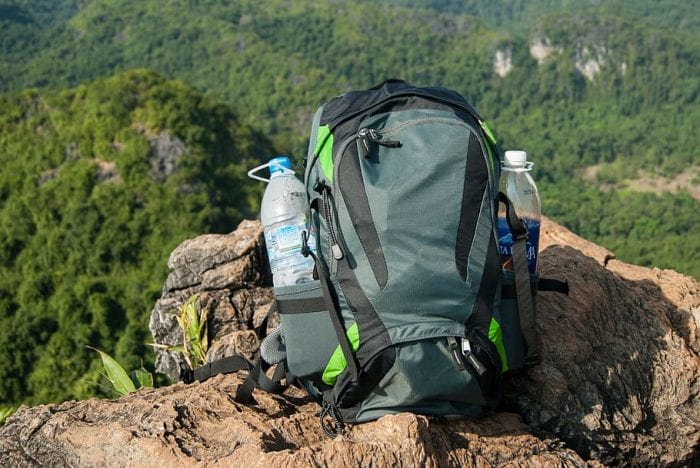
Now you’ve seen some of the other best hiking backpacks under $100 for many different needs. Consider what you’ll be using the bag for and choose the one that best suits your hiking trips.
Best Hiker’s Bags Under $100: FAQs
Is It Best To Get An Internal Frame Hiking Bag?
If you are only going to be hiking around your area now and again, and only for a half day or so, you probably don’t need to get an internal frame backpack. However, if you’ll be doing full-day hikes or overnight hikes, then a hiking pack like the REI Co-op or the TETON Sports Explorer 4000 Internal Frame backpack is a good choice.
Are Rain Covers Needed For Hiker’s Bags?
Rain cover won’t take up much space in your pack.
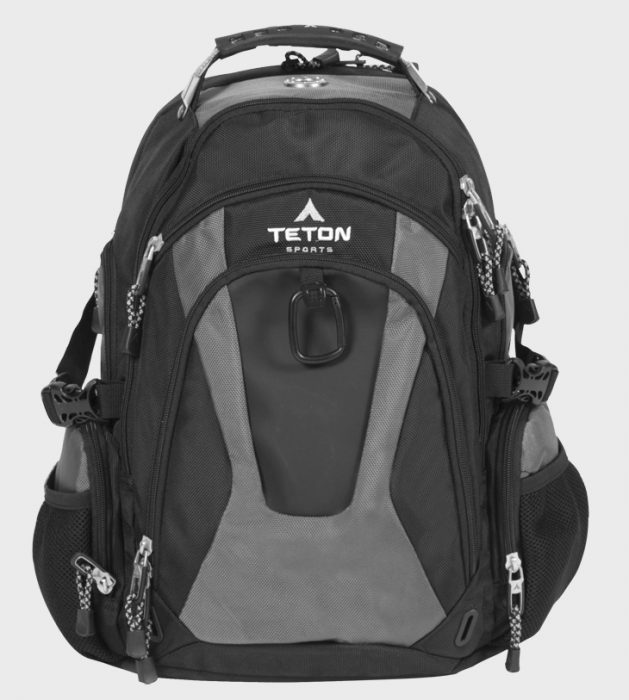
It’s worth it to have one on hand, just in case. Especially, if you do your hiking trips in the mountains where the weather can change in an instant, then having a rain cover with you is a good idea. Some hiking packs have a rain cover integrated into their design. This is the case for the TETON Sports Explorer 4000 backpack. The TETON Sports backpack has a rain cover that is attached inside a bottom compartment where you can just tuck it back in when it’s not in use.
What Is The Price Of The TETON Sports Explorer 4000?
The TETON Sports Explorer 4000 will run you between about $72 and $88. It’s a really good deal for a hiking backpack that has so much to offer and amazing ratings on Amazon. It has everything from the integrated rain cover to multiple compression straps, lots of handy pockets, a lightweight internal frame, and so much more.
What Is The Best Hiker’s Backpack Or Sleeping Bag?
How Do I Choose A Hiker’s Backpack With Shoulder Straps?
When choosing a hiking backpack, look for one with a multi-compartment design for ample storage, practical features such as a hydration reservoir, a large pocket for essentials, and larger backpacks for extended trips.
What Do Hikers Carry In Their Bags?
Hikers typically carry essentials in their backpacks, including snacks, a phone, a wallet, and sometimes even a laptop in the main body, which is roomy and secure, making it the best budget backpack; additionally, for longer adventures, they might pack clothes and gear for larger loads, benefitting from great features like a ventilated back panel for comfort and staying hydrated, with one size fitting most needs and often equipped with a pair of additional compartments.
What Makes A Good Hiker’s Bag?
How Big Should Bags Be For A 3 Day Hike?
How Heavy Should A Backpack Be For A Hike?
Is A 40L Backpack Too Big For A Day Hike?
Should I Buy A 20L Or 30L Backpack For Hiking?
Is 50L Backpack Big Enough For Hiking?
Which Are The Best Quality Knapsacks?
Which Brand Is Famous For Backpacks?
Last Updated on April 12, 2023 by Rejie Salazar
DISCLAIMER (IMPORTANT): This information (including all text, images, audio, or other formats on FamilyHype.com) is not intended to be a substitute for informed professional advice, diagnosis, endorsement or treatment. You should not take any action or avoid taking action without consulting a qualified professional. Always seek the advice of your physician or other qualified health provider with any questions about medical conditions. Do not disregard professional medical advice or delay seeking advice or treatment because of something you have read here a FamilyHype.com.